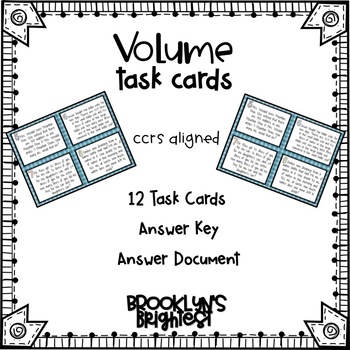Volume Task Cards
- PDF
Description
Volume task cards are a great resource for small group, whole group scoot, early finishers, reviews, & more! No-prep for you. Laminate & you can use them again & again! (Personally, I like to use these as a partner scoot for whole group. Upon reviewing the answer documents, I pull my students who need additional assistance to review the task cards again in small group.)
These questions are great to use with your volume unit. (I always find it difficult to find grade-level resources for this unit, so that's why I made them!) This is also another reinforcement of reasonable measurement as liters and milliliters are used. All 4 operations are used within these task cards. (Yeah!) Some are even multi-step.
This resource comes with 12 task cards, an answer key, as well as an answer document. Enjoy!!
Remember-- You can earn TPT Credits for purchases if you leave feedback & a comment!! THANK YOU!! (-:
*This resource may be purchased at a discounted price in my mass & volume task card bundle.





